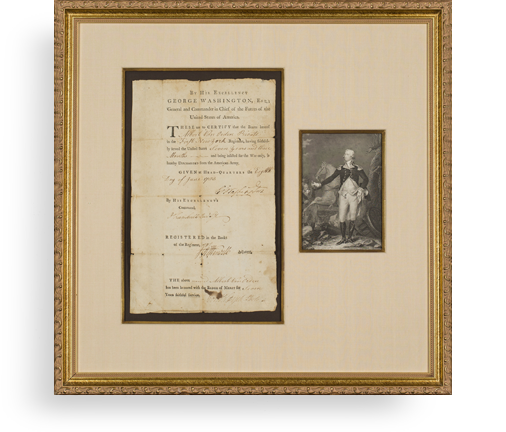SOLD One of Lincoln’s First Pardons of a Confederate Under the Amnesty of December 8, 1864

It is dated the day after - December 9, 1864.
President Lincoln wanted to implement a lenient policy for reconstruction for the South. A key part of this plan was put into place on December 8, 1864, when he issued a proclamation that provided guidelines for the systematic reestablishment of loyal state governments in that region. It also contained a means of...
President Lincoln wanted to implement a lenient policy for reconstruction for the South. A key part of this plan was put into place on December 8, 1864, when he issued a proclamation that provided guidelines for the systematic reestablishment of loyal state governments in that region. It also contained a means of repatriating those who had “participated in the existing rebellion” and now wanted to resume their allegiance: he would issue a full pardon if they took a prescribed oath of loyalty. Significantly, the pardon provided for restoration of all rights of property except as to slaves. This was the required oath: “I do solemnly swear, in presence of Almighty God, that I will henceforth faithfully support, protect and defend the Constitution of the United States, and the union of the States thereunder; and that I will, in like manner, abide by and faithfully support all acts of Congress passed during the existing rebellion with reference to slaves…and that I will, in like manner, abide by and faithfully support all proclamations of the President made during the existing rebellion having reference to slaves…So help me God.”
Many persons in southern areas under Union control, as well as Confederate soldiers held as prisoners of war in the North (including those who had been reluctantly drafted into the Southern service), thought the war as good as lost and sought to take Lincoln up on his offer. They or their friends wrote the President explaining their situations and asking for the pardon. He would write out his order and send it on to the appropriate department.
The President spent part of the day after issuing his proclamation entertaining the initial applications. One was brought to his attention by Kellian Van Rensalear Whaley, former commander of the 9th West Virginia Infantry and presently serving as the new state of West Virginia’s first congressman.
Autograph Letter Signed on Executive Mansion letterhead, Washington, December 9, 1864, ordering the release of a Confederate prisoner. “Today, on the application of Hon. Mr. Whaley of West Virginia, I direct that Elijah Morgan, a prisoner of war at Fort Delaware, be discharged on taking the oath of Dec. 8, 1864.” The recipient would have been the Secretary of War, Edwin Stanton. We have had similar orders as endorsements in the past, but have never had one in the form of a letter on letterhead, perhaps indicating that for the first day or so Lincoln thought to write letters of pardon but quickly concluded that the task was too arduous.

Frame, Display, Preserve
Each frame is custom constructed, using only proper museum archival materials. This includes:The finest frames, tailored to match the document you have chosen. These can period style, antiqued, gilded, wood, etc. Fabric mats, including silk and satin, as well as museum mat board with hand painted bevels. Attachment of the document to the matting to ensure its protection. This "hinging" is done according to archival standards. Protective "glass," or Tru Vue Optium Acrylic glazing, which is shatter resistant, 99% UV protective, and anti-reflective. You benefit from our decades of experience in designing and creating beautiful, compelling, and protective framed historical documents.
Learn more about our Framing Services







































































































